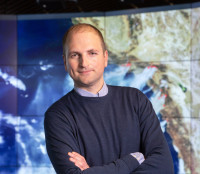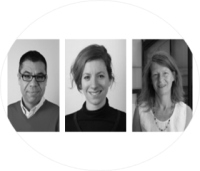Assessing the risk of seismic hazard at a given site is not an easy task. In the presence of active faults the problem becomes even more complex, as it requires an in-depth and up to date understanding of the active fault system affecting a region. Incomplete understanding leads to unreliable estimation of the risks, which in turn results in unadapted mitigation. For their calculations, the loss assessment communities currently use simplified probabilistic seismic hazard models that lack insight on the behaviour of complex fault systems. Recognising the need for a more detailed and viable method to model the interaction of faults, one that accurately reflects their complexity, AXA and a scientific team from the Geology Laboratory at the École Normale Supérieure (ENS) in Paris and from the seismic risk laboratory at IRSN are joining forces to propose a novel approach to modelling of fault data. The main objective of this Joint Research Initiative (JRI) is to increase the reliability of seismic loss estimates by better quantifying the uncertainties involved in each step of seismic hazard assessment. In doing so, the project also aims at a better understanding of the impact of these uncertainties may have on seismic loss estimates.
Estimating earthquake related losses requires taking three main components into consideration : seismic hazard assessment which is the estimation of earthquake recurrences and the associated shaking intensity ; the vulnerability of infrastructures given a shaking intensity and the exposure part which estimates the loss based on the structural damage estimated on a building. "The major challenge is to correctly propagate the uncertainties involved in each of the computational steps", explains Doctor Hélène Lyon-Caen, principal scientific investigator of the project. "For computational and practical reasons, the loss assessment community usually relies on quite simplified hazard assessment models based on a limited exploration of uncertainties". "Our first objective is thus to propose a novel approach which better reflects the complexity of seismic assessment and takes uncertainties into careful consideration". To develop an approach flexible enough to be transposable to different regions of the world, the scientific team from the ENS and IRSN are scheduled to conduct field studies in Greece, Eastern France and Turkey, three areas with very different seismic caracteristics. The challenge of this novel approach will be to consider and integrate into the calculations the large spectrum of data specific to each seismic zone. This should lead to a more reliable seismic hazard modelling approach.
Bridging the gap between the geoscience and loss assessment communities
To supplement this important step towards better quantification of uncertainties in seismic loss estimates, the JRI also aims to come up with a new approach to enable the correct propagation of these uncertainties in all steps of the computations and consider them in the outcome results. Moreover, visualisation tools will be developed by the JRI teams to help both the geoscience community to identify the relevant data that should be collected to reduce epistemic uncertainties and the risk community by identifying where the uncertainties in hazard models are coming from and thus help in the decision-making process.
To avoid the potentially devastating consequences of badly informed decision-making, creating a dialog between the geoscience and risk communities is paramount. In joining forces, the ENS – IRSN team and the AXA team aim to bridge the gap and provide each other with mutual insight on how to improve estimations and keep uncertainties in the loop. In this sense, the AXA Joint Research Initiative has the potential to significantly contribute to the improvement of seismic hazard mitigation.



